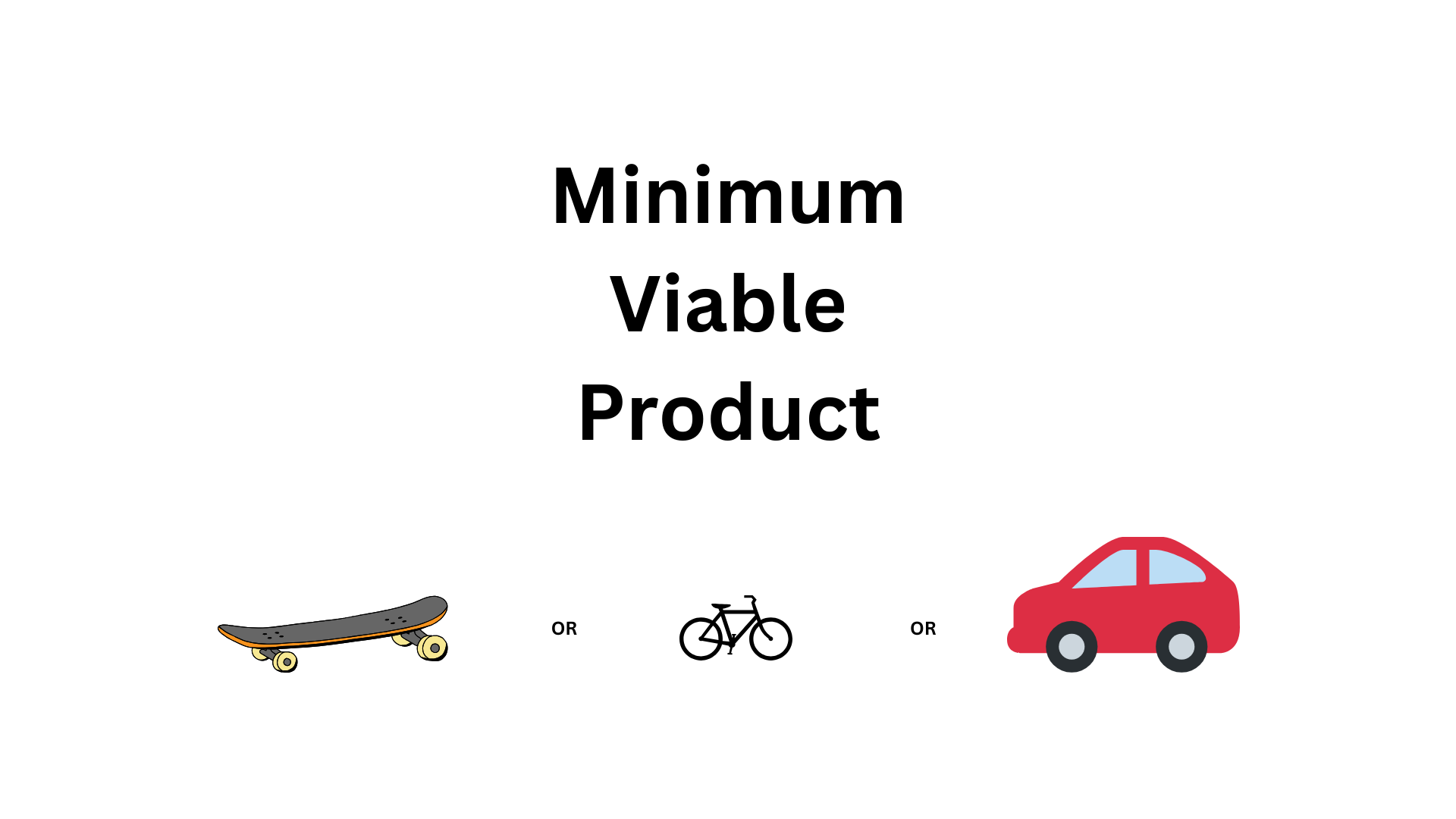Introduction
The concept of a Minimum Viable Product (MVP) has gained significant traction in the startup world. But what exactly does it mean? In this blog post, we will delve into the world of MVP, exploring its core elements, step-by-step process, challenges, and success stories. By the end, you’ll have a comprehensive understanding of MVP and its significance in the business landscape.
1.1 What is a Minimum Viable Product (MVP)?
A Minimum Viable Product (MVP) is a version of a product with just enough features to satisfy early customers and provide feedback for future development. The idea behind an MVP is to create something quickly and cost-effectively, testing assumptions and gathering customer insights to drive iterative, informed product development.
1.2 Importance and Benefits of MVP
The importance of building an MVP cannot be overstated. By launching an MVP, businesses can validate their assumptions, mitigate risk, and save time and resources. It allows entrepreneurs and product teams to gather feedback early on, ensuring the development process aligns with the needs and preferences of the target audience.
MVPs are also instrumental in attracting investors and building traction. With a tangible product or prototype, entrepreneurs can showcase their vision and demonstrate market demand, increasing their chances of securing funding and support.
1.3 Common Misconceptions about MVP
Before we dive into the core elements and process of building an MVP, let’s address some common misconceptions that often arise when discussing MVPs.
One prevalent misconception is that an MVP must be bare-bones or of low quality. However, an MVP should be usable and valuable to the early adopters. It should provide a solution to the identified problem, even if it lacks advanced features.
Another misconception is that an MVP is a one-time event. In reality, an MVP is part of an iterative process. It serves as the starting point, and subsequent versions of the product are built upon the lessons learned from the MVP.
Core Elements of MVP
To build a successful MVP, it’s essential to understand its core elements. Let’s explore these key components in detail.
2.1 Identifying the Problem to Solve
Every successful product starts with a problem that needs solving. To build an effective MVP, it’s crucial to identify a specific pain point or need in the market. By clearly defining the problem, you can develop a solution that resonates with your target audience.
2.2 Defining the Minimum Features
Once the problem is identified, the next step is to define the minimum features required to address it. It’s essential to focus on the core functionalities that provide value to users. By keeping the features lean and focused, you can quickly develop and launch an MVP that meets the immediate needs of your target audience.
2.3 Validating Assumptions with User Feedback
User feedback is invaluable when it comes to validating assumptions and refining your MVP. Engage with your early customers, gather their feedback, and iterate accordingly. This continuous feedback loop will ensure that your product aligns with the user’s expectations and evolves based on real-world insights.
Step-by-Step Process for Building an MVP
Now that we understand the core elements of an MVP, let’s dive into the step-by-step process of building one.
3.1 Conducting Market Research and Analysis
Before embarking on your MVP journey, it’s crucial to conduct thorough market research and analysis. Understand your target audience, identify competitors, and analyze market trends. This research will ensure that your MVP caters to a genuine market demand and differentiates itself from existing solutions.
3.2 Creating a Lean Business Model
Developing a lean business model is essential to ensure the viability of your MVP. Consider factors like revenue streams, cost structure, and customer acquisition strategies. A well-defined business model will guide your decision-making throughout the MVP development process.
3.3 Designing the User Experience (UX)
An intuitive and engaging user experience is paramount for the success of your MVP. Invest time and effort in designing a user-centric interface that provides a seamless experience. The UX design should focus on solving the identified problem and making the product easy to understand and navigate.
3.4 Developing the Minimum Features
With the problem, target audience, and user experience defined, it’s time to develop the minimum features of your MVP. Keep in mind the core functionalities required to address the identified problem. Prioritize simplicity and usability while avoiding feature bloat.
3.5 Testing and Iterating the MVP
Once your MVP is developed, it’s crucial to test it with your target audience and gather feedback. This feedback will provide valuable insights that can shape the direction of your product. Iterate based on the feedback received to continuously improve and refine your MVP.
Challenges and Pitfalls of MVP Development
While building an MVP offers numerous benefits, it also comes with its fair share of challenges. Let’s explore some common pitfalls and how to navigate them effectively.
4.1 Balancing Simplicity and Functionality
One challenge is finding the delicate balance between simplicity and functionality. It’s important to provide enough value to the users without overwhelming them with unnecessary features. Continuously seek feedback and iterate to strike the right balance.
4.2 Prioritizing Features and Setting Realistic Goals
With limited resources, it’s crucial to prioritize features and set realistic goals for your MVP. Identify the must-have features that address the core problem and focus on implementing them effectively within the given timeline and budget.
4.3 Managing Resource Constraints and Budget
Building an MVP requires careful resource management, especially when it comes to budget and human resources. Consider outsourcing certain tasks, leveraging existing technologies, or adopting an agile development process to optimize resource allocation.
4.4 Handling Feedback and Incorporating Changes
Feedback can be overwhelming, but it’s crucial to handle it effectively. Prioritize feedback that aligns with your vision and addresses the core problem you’re solving. With a clear roadmap, incorporate relevant changes and maintain focus on the user’s needs.
4.5 Avoiding Scope Creep and Maintaining Focus
Scope creep is a common pitfall that can derail your MVP development process. Stay disciplined and focused on the core problem, avoiding unnecessary additions or diverging from the initial vision. Continuously refer back to your minimum features and customer feedback to maintain a clear direction.
Success Stories and Examples of MVP
To truly understand the power of MVP, let’s explore some inspiring success stories across different industries.
5.1 Airbnb: From Airbeds to Global Accommodation Platform
What started as a simple idea to rent air mattresses in San Francisco has transformed into a global accommodation platform. Airbnb’s founders initially launched an MVP to test the market demand for affordable accommodations. Through constant iteration and listening to their customers, they expanded their services, disrupted the hospitality industry, and revolutionized the way we travel.
5.2 Dropbox: From a Simple File Sharing Tool to an Industry Giant
Dropbox, now a household name, began as a minimalistic file sharing tool. By focusing on user experience and solving the pain point of file storage and sharing, they quickly gained traction and became an industry giant. Dropbox’s success story showcases the power of a well-executed MVP that addresses a genuine need.
5.3 Buffer: The Evolution of a Social Media Management App
Buffer, a social media management app, started as a basic scheduling tool. Their MVP allowed users to schedule tweets in advance, simplifying the social media management process. Through iterative development and close collaboration with their users, Buffer expanded its feature set and gained a loyal user base, transforming into a comprehensive social media management platform.
5.4 Zappos: Starting with Shoes and Revolutionizing E-commerce
Zappos, now synonymous with online shoe shopping, began with a simple idea. They launched an MVP offering a wide selection of shoes and a customer-centered shopping experience. By focusing on customer service and satisfaction, they disrupted the traditional brick-and-mortar shoe retail industry and paved the way for online shopping as we know it today.
5.5 Instagram: Capturing Moments and Transforming Photo Sharing
Instagram, the popular social media platform for sharing photos, started with a minimalistic MVP. By providing users with an easy and visually appealing way to share their moments, Instagram quickly gained traction and transformed how we capture and share photos. Their success story demonstrates the power of launching an MVP with a strong focus on user experience.
Summary and Key Takeaways
In summary, a Minimum Viable Product (MVP) is a valuable tool for startups and businesses looking to validate their ideas, gather feedback, and iterate based on real-world insights. It’s essential to identify the problem, define the minimum features, and continuously engage with users to refine and improve the MVP.
Key takeaways from this blog post include:
- MVP is not about building a subpar product but rather a focused solution that addresses a specific problem.
- MVP is part of an iterative process; subsequent versions are built upon the lessons learned from the MVP.
- To develop a successful MVP, conduct thorough market research, create a lean business model, design a user-centric interface, and prioritize simplicity.
- Challenges such as balancing simplicity and functionality, managing resource constraints, and handling feedback require careful navigation.
- Success stories like Airbnb, Dropbox, Buffer, Zappos, and Instagram exemplify the power of a well-executed MVP.
FAQs
To wrap up, let’s address some frequently asked questions about MVP.
7.1 What are the key differences between MVP and a prototype?
While a prototype is a preliminary version of a product used for demonstration and testing purposes, an MVP is a functional product with enough features to satisfy early customers and gather feedback.
7.2 How do you determine if an idea is suitable for an MVP approach?
An idea is suitable for an MVP approach if it solves a specific problem, can be developed quickly and cost-effectively, and can provide value to early customers.
7.3 Are there any industries or projects where MVP is not applicable?
MVP is applicable to a wide range of industries and projects. Any business or project that aims to provide a solution to a problem can benefit from the MVP approach.
7.4 Can an MVP be developed for non-tech products or services?
Absolutely! MVPs can be developed for non-tech products or services. The key is to identify the core problem, define the minimum features, and test the hypothesis with early customers.
7.5 What is the relationship between MVP and Agile development?
Agile development and MVP go hand in hand. Both approaches prioritize iterative development, customer collaboration, and continuous improvement. MVPs often form the foundation of Agile development, driving the iterative feedback loop.



